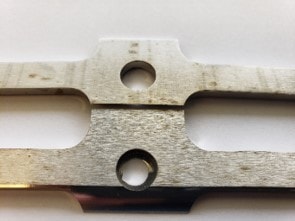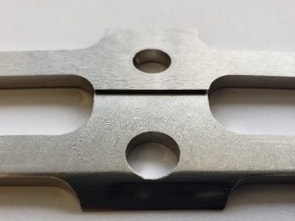Stainless steel is created to be corrosion resistant, however free iron will be present on the surface from the base material as well as being imbedded from machining processes, abrasion, or foreign debris. This iron will rust when exposed to the atmosphere for an extended period of time, so in order to inhibit this corrosion, the stainless steel undergoes the passivation process to remove the free iron from its surface. By submerging the material in a citric acid or nitric acid solution the free iron will be dissolved from the surface leaving mostly chromium behind. When the chromium is exposed to the atmosphere a chromium oxide layer will form. This layer of chromium oxide is quite resistant to corrosion and environmental conditions and is the desired condition for passivated materials.


In Figure 1 you can see we took some 17-4 stainless steel parts and set them outside for 3 months. The 2 parts on the top were untreated and show spots of rust, pitting, and corrosion. The 2 parts on the bottom were cleaned and passivated using a citric acid solution and then left alongside our control group parts for the same period of time. Note there are virtually no blemishes on the passivated parts.
